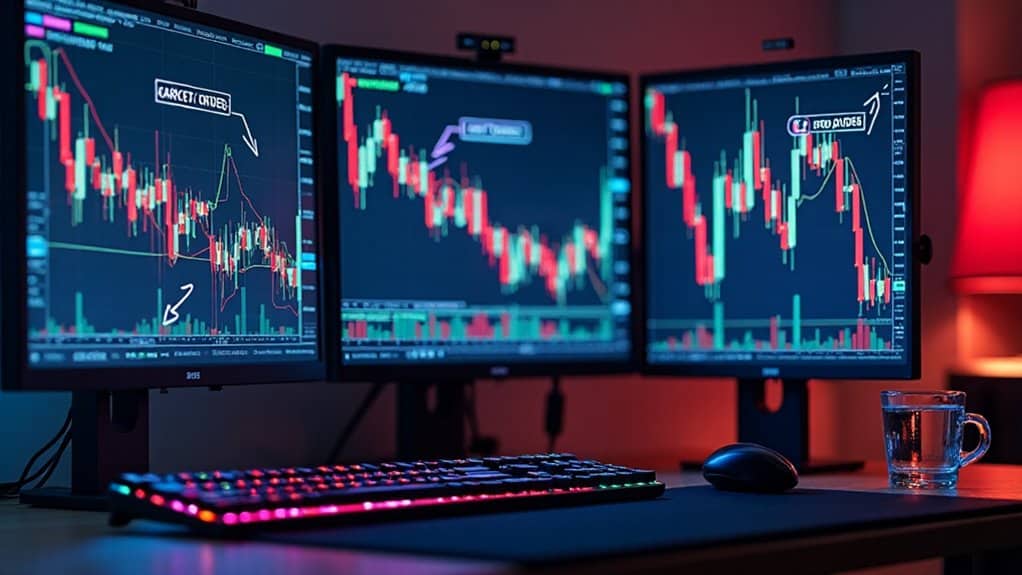Margin trading allows you to control larger positions by borrowing funds from your broker, using your own capital as collateral. Understanding how margin works is crucial for managing risk and maximizing trading opportunities across different markets.
Understanding Margin and Leverage
Margin is the percentage of a trade’s total value that you must deposit as collateral. This percentage directly determines your leverage ratio. For example:
- 1% margin requirement = 100:1 leverage
- 2% margin requirement = 50:1 leverage
- 50% margin requirement = 2:1 leverage
In practice, if you want to open a $100,000 forex position with 2% margin requirements, you need to deposit $2,000 of your own funds while your broker lends you the remaining $98,000.
Stock trading operates differently under Regulation T, which typically requires 50% margin for most positions. This means purchasing $10,000 worth of stock on margin requires $5,000 of your own capital.
How Margin Accounts Work
A margin account is a specialized brokerage account that enables you to borrow funds beyond your cash balance. Here’s how it functions:
Account Setup: Your broker extends credit based on the securities and cash you hold as collateral, applying specific leverage ratios to determine your borrowing capacity.
Dynamic Equity: Your account equity fluctuates continuously with market movements. As your positions gain or lose value, your available margin changes accordingly.
Maintenance Requirements: Brokers enforce minimum equity levels that you must maintain at all times. Falling below these thresholds can trigger immediate action.
Calculating Margin Requirements
To determine how much margin you need for a position, use this formula:
Required Margin = Position Value × Margin Percentage
Where Position Value = Trade Size × Current Price
Examples:
- Stock Trade: $20,000 position × 50% margin = $10,000 required
- Forex Trade: $100,000 position × 1% margin = $1,000 required
Important Considerations:
- Margin requirements vary by asset class and volatility
- FINRA regulations for stocks may require 30% for stable stocks, but 100%+ for highly volatile ones
- You must calculate margin for all open positions, including pending orders
- Always factor in potential market movements when planning trades
Managing Margin Risk
Effective margin management is essential to avoid costly mistakes:
Maintenance Margins
Brokers set maintenance requirements (typically 25-40% of position value) that you must maintain even after losses. Falling below this level triggers a margin call.
Risk Management Strategies:
- Monitor constantly: Keep track of your margin level relative to requirements
- Use stop-losses: Systematic stop-loss orders limit potential losses
- Maintain buffers: Never let your equity approach minimum levels
- Act quickly: Deposit funds immediately if you receive a margin call
Margin Calls
When your account equity falls below maintenance requirements, brokers may:
- Demand immediate cash deposits
- Liquidate positions without warning
- Close positions at unfavorable market prices
Advantages and Disadvantages
Advantages:
- Increased buying power: Control larger positions than your cash balance allows
- Amplified profits: A 5% gain on a 10:1 leveraged position yields 50% return on your capital
- Flexibility: Access to short-term borrowing for trading opportunities
- Capital efficiency: Deploy the same capital across multiple strategies
Disadvantages:
- Magnified losses: Small adverse moves can exceed your initial investment
- Margin calls: Sudden demands for additional capital during volatile periods
- Forced liquidation: Positions may be closed at the worst possible times
- Interest costs: Borrowed funds accrue daily interest charges
- Emotional pressure: Leverage can lead to poor decision-making under stress
Best Practices for Margin Trading
- Start small: Begin with lower leverage ratios to understand the mechanics
- Risk management: Never risk more than you can afford to lose
- Stay informed: Understand your broker’s specific margin requirements
- Plan for volatility: Maintain adequate cushions for unexpected market moves
- Regular monitoring: Check your positions and margin levels frequently
Conclusion
Margin trading is a powerful tool that can significantly enhance your trading capacity, but it requires careful management and thorough understanding. The same leverage that amplifies profits can quickly turn small losses into account-threatening disasters.
Success with margin trading depends on maintaining adequate equity levels, implementing robust risk management practices, and never borrowing more than you can afford to lose. Whether trading forex with 100:1 leverage or stocks with 2:1 leverage, the fundamental principle remains the same: respect the power of borrowed money and always trade within your means.
Remember that brokers can liquidate your positions without notice during periods of high volatility, making it crucial to maintain sufficient margin buffers and use appropriate position sizing for your risk tolerance.


Leave a Reply